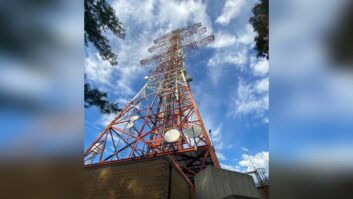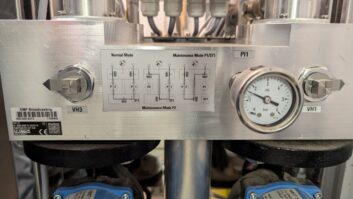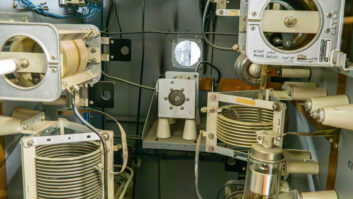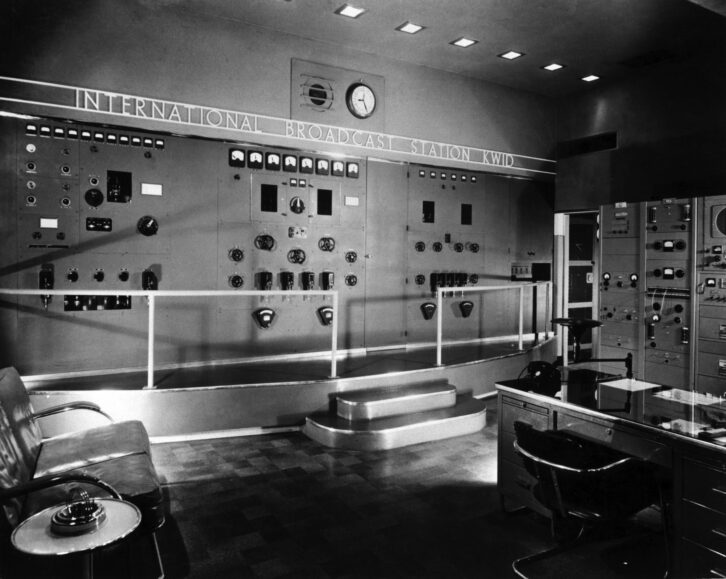
The General Electric Co. was truly among America’s premier broadcasting companies.
In addition to developing much of early broadcast technology and building a trio of high-power AM stations in the early 1920s — WGY Schenectady, N.Y.; KOA Denver; and KGO Oakland, Calif. — GE was also the country’s pioneer shortwave broadcaster.
GE’s initial shortwave station, 2XI, first broadcast in 1923, and in 1924 it was used to relay WGY’s programs for to KOA and KGO for rebroadcast in the western U.S.
By 1925, there were two experimentally licensed shortwave stations in Schenectady: W2XAD and W2XAF. A third GE station in San Francisco, W6XBE, was added in 1939.
That was the year that the Federal Communications Commission allowed the country’s experimental shortwave stations to relicense as commercial operations, and these three GE stations received the call signs WGEA, WGEO and KGEI, respectively.
BIG BERTHA AND WWII
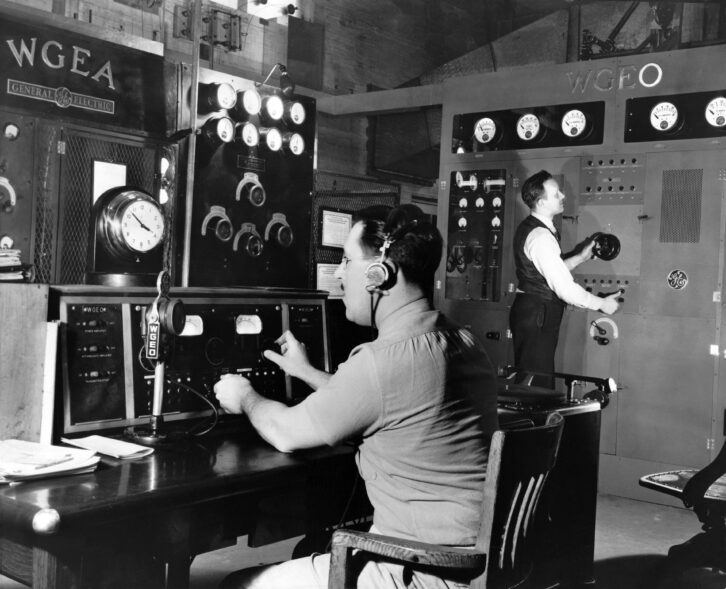
In July of 1939, WGEA and WGEO debuted the world’s most powerful shortwave transmitter, a 100 kW monster nicknamed Big Bertha. It utilized a new 100 kW GE power tube that featured a demountable filament. Big Bertha alternated service between WGEA and WGEO, primarily broadcasting programs in Spanish and Portuguese to South America.
A few weeks after the attacks on Pearl Harbor, the government bought the transmitter under an emergency authorization. It was dismantled and shipped by rail to San Francisco, where it went on the air as KWID, serving as America’s second shortwave radio voice in the Pacific war theater (along with KGEI).
In order to keep WGEA on the air, GE refurbished an old 50 kW transmitter that dated back to the early ’30s, and this unit operated until a second “Big Bertha” could be constructed. The new WGEA 100 kW transmitter was inaugurated in Sept. 1942.
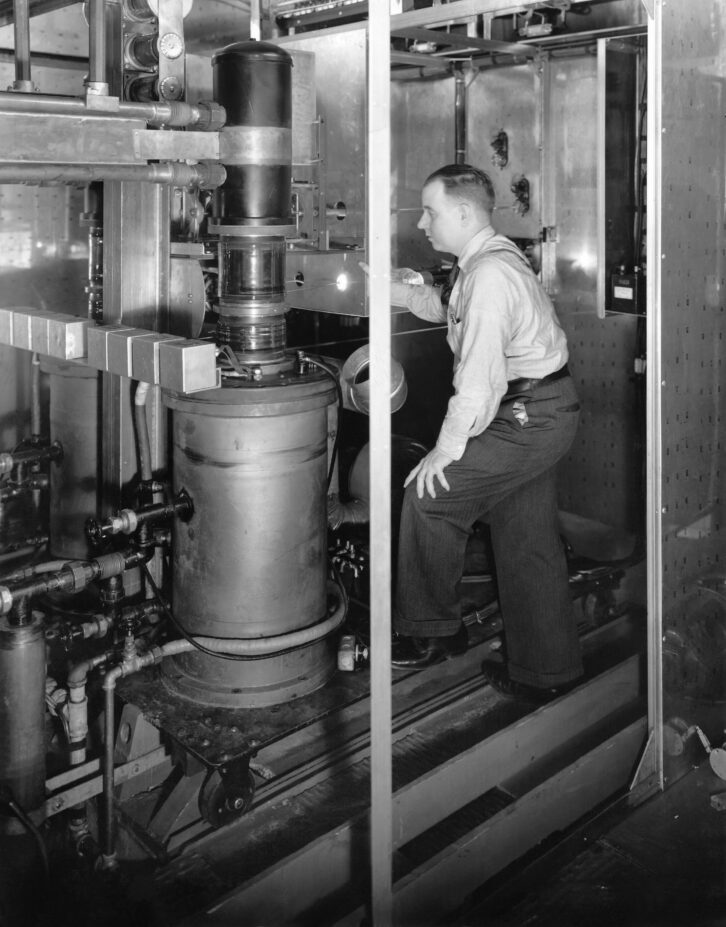
At the start of World War II, the government found itself with a critical problem of its own creation: The value of shortwave radio as an information and propaganda vehicle was recognized instantly; however, a 1930s congressional ruling prohibited the government from owning or operating any broadcast stations, and all 14 of the country’s shortwave stations were in private hands.
As an immediate solution, the government decided to lease all private shortwave stations in the country, effective Nov. 1, 1942, and the Office of War Information was given the responsibility to program them all. The station owners (CBS, NBC, GE, Crosley, Westinghouse, KSFO and WRUL) continued to operate and maintain the transmitters, and all costs were paid by the government.
After the end of the war, the Office of War Information was reborn as the Voice of America, but the VOA existed only as a producer of programs.
Also, the government continued the station leases until Nov. 1, 1963, when it finally took direct ownership of the leased stations. That was also the year that the VOA opened its new shortwave facility in Greenville, N.C. At that time, the Schenectady shortwave operations were determined to be unnecessary and outmoded, and they were shut down in 1963.
John Schneider is a lifelong radio history researcher and a longtime Radio World contributor. Write the author at [email protected].

